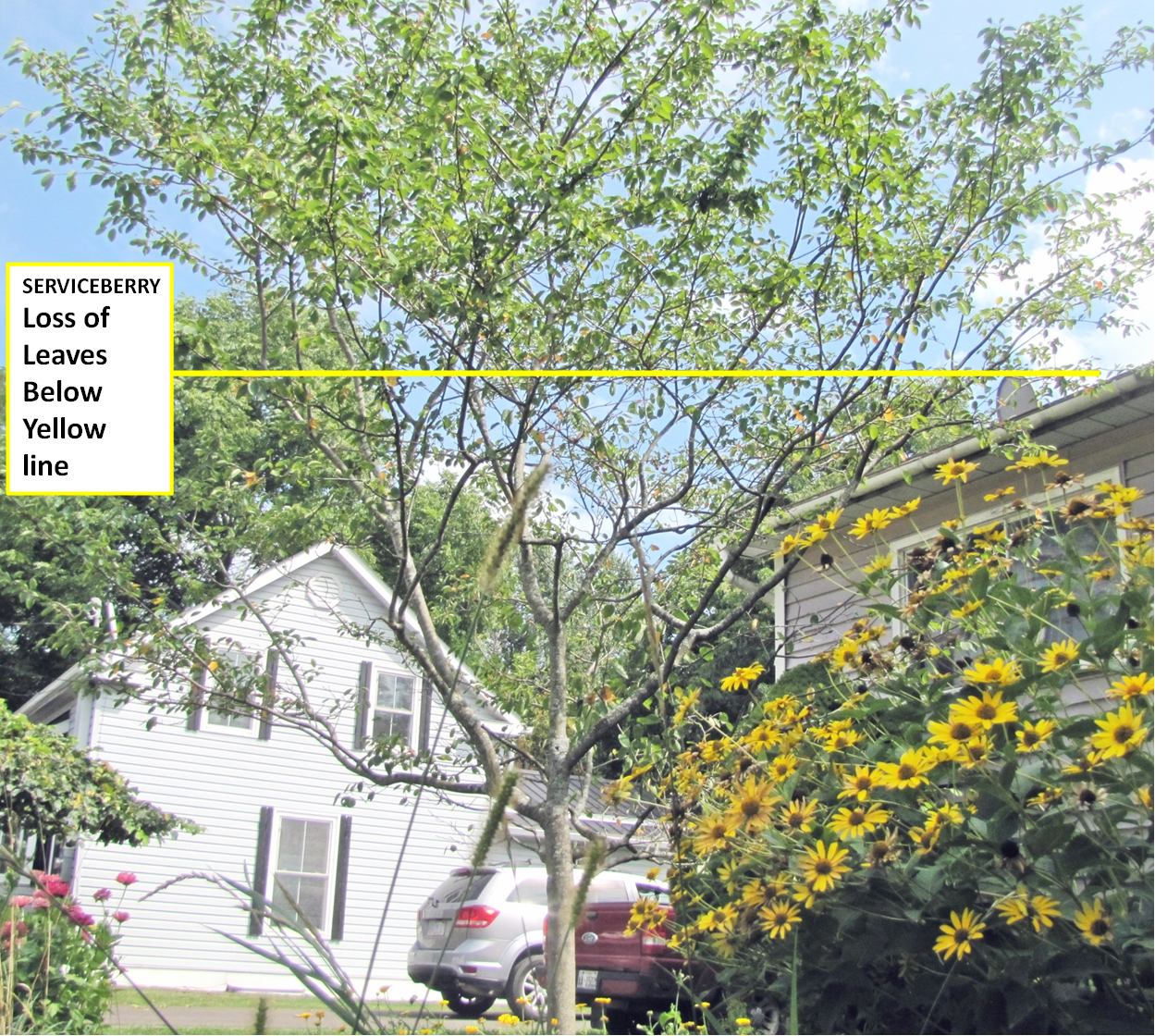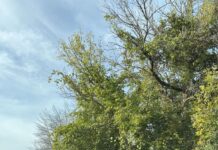William John Langenberg, M.Sc Env. Biol.,
Former researcher and lecturer at Kemptville College
Climate change seems to have a devastating effect on some common local landscape trees and shrubs. Popular trees, such as Mountain Ash, Beech, Willow, and Serviceberry are losing their leaves mid-summer. If this global warming continues, the familiar oak will be added to the extinction list, according to research by Dr. Ir. Wieger Wamelink, Ecologist, at the University of Wageningen, the Netherlands.

This summer has been hard on the Serviceberry (Amelanchier Canadensis). On the photo can be seen that the bottom half of this 10year old Serviceberry tree is losing its leaves. Earlier this month, the leaves were discoloring. This tree has a hard time surviving. The average temperature ranged between 26 and 30 C with a minimal amount of rainfall. Warmelink in Wageningen researched strictly the relationship between temperature and tree decline. He concluded the temperature sensitivity can be related to the decline of the trees. Similarly, this author did an extensive study of average daily temperature that occurred at Kemptville College over a 50 year period from 1937-1987. This research showed that the average daily temperature at the college had increased by 0.5 C over the 50 years. As a result of this study, this author changed the Winter Hardiness Zone Map by half-a zone for Eastern Ontario. This created some animosity among the climatologists in Ottawa, because snow depth was not included in this study. A climate study today showed that the average annual temperature at the Ottawa airport increased from 5.5 C in 1997 to 6.6 C in 2022, an increase of 1.1 C. If another 0.7 C is added in the next 10 years, a large portion of Ontario’s ecosystem is beyond the preferred temperature range for most of cultivated landscape plants and garden plants, such as wild raspberries, blueberries and flowering herbs.
The flowers of Blue Spice Basil and Ararat basil are aborting this summer because of the high temperature. The higher the temperature, the more plants and trees will be in trouble. At a certain point, the warming will affect the foundation of Ontario’s forests; including the pedunculated oak and nut trees.
Hedges, hedgerows and narrow strips of double rowed trees will help to alleviate the warming trend with the creation of microclimates. Solitary trees out in the open are often the first to fall prey to the heat, because they are baking in the sun on hot days.
Old forests, common around Kemptville, provide a greater shelter against the heat as there is more diversity among the trees in those forests. That means that many different types of trees of a mixture of deciduous and coniferous trees with different root depths, soil formation and shades will help keep each other upright during the hot summer days. Preservation of the forests around Kemptville therefore is essential.
In 1987, Clarence Coons and Alf Campbell of MNR, Earl Hicks and this author of Kemptville College planted a mixture of deciduous and coniferous trees on the college campus along Concession Road (across from South Branch School) to change the microclimates on this section of the campus. Today, if the coniferous trees are removed, the sugar maples will die because of heat stress and sunscald, followed by the decline of poplars.
If this warming trend continues, trees from southern regions with a different DNA (adaptable to higher temperatures) may perform better in southern and eastern Ontario.







